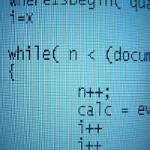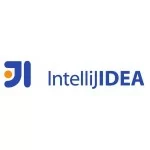Solidity Best Practices for 2025: Tackling Gas Fees and Scalability
As blockchain technology continues to evolve, Solidity remains one of the most popular programming languages for developing smart contracts on Ethereum and other EVM-compatible blockchains. However, developers face persistent challenges, such as high gas fees and scalability issues, which can hinder the efficiency and adoption of decentralized applications (dApps). In this article, we’ll explore the best practices for writing Solidity code in 2025, focusing on gas optimization and scalability solutions.
1. Gas Optimization Techniques
Gas fees are a critical concern for Ethereum developers. Every operation in a smart contract consumes gas, and inefficient code can lead to exorbitant costs. Here are some best practices to minimize gas usage:
a. Use Efficient Data Types
- Choose the smallest data type that fits your needs. For example, use
uint8instead ofuint256if the value is small. - Pack related variables into a single storage slot to reduce storage costs.
1 2 3 4 5 | struct PackedData { uint8 smallValue; uint64 mediumValue; uint128 largeValue;} |
b. Minimize Storage Operations
- Storage operations are expensive. Use memory and stack variables whenever possible.
- Cache frequently accessed storage variables in memory to reduce repeated storage reads.
1 2 3 4 5 6 | function updateValue(uint256 newValue) public { uint256 cachedValue = storageValue; // Cache storage variable if (cachedValue != newValue) { storageValue = newValue; // Update storage only if necessary }} |
c. Use Events Instead of Storage for Logging
- Events are cheaper than storing data on-chain. Use them to log important information that can be retrieved off-chain.
1 2 3 4 5 | event ValueUpdated(uint256 newValue);function updateValue(uint256 newValue) public { emit ValueUpdated(newValue); // Log data instead of storing it} |
d. Avoid Loops and Complex Calculations
- Loops and complex calculations can consume significant gas. Optimize algorithms to reduce iterations and computational overhead.
2. Scalability Solutions
Scalability is a major bottleneck for Ethereum-based dApps. Here are some strategies to address scalability issues:
a. Layer 2 Solutions
- Use Layer 2 scaling solutions like Optimistic Rollups or zk-Rollups to offload transactions from the main Ethereum chain.
- Integrate with platforms like Arbitrum, Optimism, or Polygon zkEVM to reduce congestion and gas fees.
b. Sharding and Sidechains
- Leverage sharding (when available) to split the blockchain into smaller, more manageable pieces.
- Use sidechains or EVM-compatible chains like Binance Smart Chain (BSC) or Avalanche for lower-cost transactions.
c. Modular Smart Contracts
- Break down large contracts into smaller, modular components. This reduces deployment costs and makes contracts easier to upgrade.
01 02 03 04 05 06 07 08 09 10 11 | contract ModuleA { function functionA() public pure returns (string memory) { return "Module A"; }}contract ModuleB { function functionB() public pure returns (string memory) { return "Module B"; }} |
3. Security Best Practices
Gas optimization and scalability should not come at the cost of security. Follow these practices to ensure your smart contracts are secure:
a. Use Audited Libraries
- Leverage well-audited libraries like OpenZeppelin for common functionalities such as ERC20 tokens, access control, and reentrancy guards.
1 2 3 4 5 | import "@openzeppelin/contracts/token/ERC20/ERC20.sol";contract MyToken is ERC20 { constructor() ERC20("MyToken", "MTK") {}} |
b. Prevent Reentrancy Attacks
- Use the
checks-effects-interactionspattern or OpenZeppelin’sReentrancyGuardto prevent reentrancy attacks.
01 02 03 04 05 06 07 08 09 10 11 12 | function withdraw() public nonReentrant { // Checks require(balances[msg.sender] > 0, "No balance"); // Effects uint256 amount = balances[msg.sender]; balances[msg.sender] = 0; // Interactions (bool success, ) = msg.sender.call{value: amount}(""); require(success, "Transfer failed");} |
c. Test Thoroughly
- Use testing frameworks like Hardhat or Truffle to write comprehensive unit and integration tests.
- Perform stress testing to simulate high-load scenarios and identify bottlenecks.
4. Future-Proofing Your Smart Contracts
a. Upgradeable Contracts
- Use proxy patterns like the Transparent Proxy or UUPS Proxy to make your contracts upgradeable without losing state.
1 2 3 4 5 | import "@openzeppelin/contracts/proxy/ERC1967/ERC1967Proxy.sol";contract MyProxy is ERC1967Proxy { constructor(address logic, bytes memory data) ERC1967Proxy(logic, data) {}} |
b. Stay Updated with EIPs
- Keep an eye on Ethereum Improvement Proposals (EIPs) that introduce new features or optimizations. For example, EIP-1559 improved gas fee predictability.
c. Adopt New Standards
- Implement emerging standards like ERC-4337 (Account Abstraction) or ERC-721x (Advanced NFTs) to stay ahead of the curve.
5. Tools and Resources
- Remix IDE: A browser-based IDE for writing and testing Solidity code.
- Hardhat: A development environment for compiling, testing, and deploying smart contracts.
- Tenderly: A platform for debugging and monitoring smart contracts.
- Etherscan: A block explorer for verifying and analyzing contracts on-chain.
6. Conclusion
In 2025, Solidity developers must prioritize gas optimization, scalability, and security to build efficient and future-proof smart contracts. By adopting Layer 2 solutions, modular design patterns, and secure coding practices, developers can overcome the challenges of high gas fees and scalability limitations. As the blockchain ecosystem evolves, staying updated with the latest tools, standards, and best practices will be key to success.



